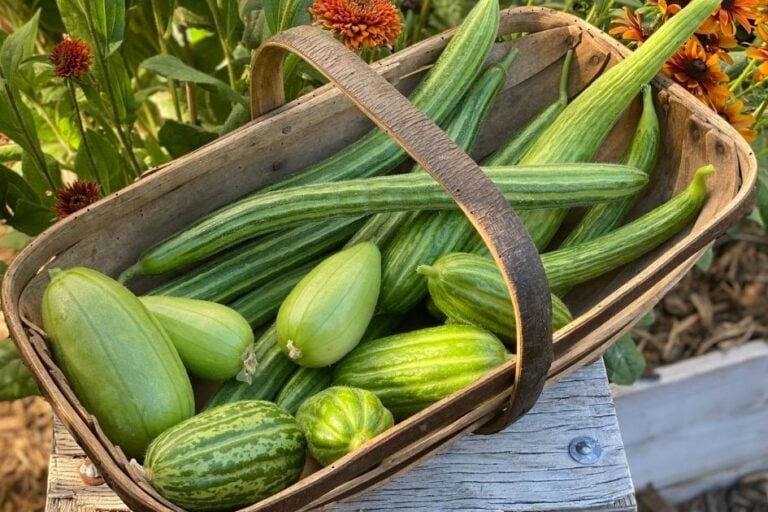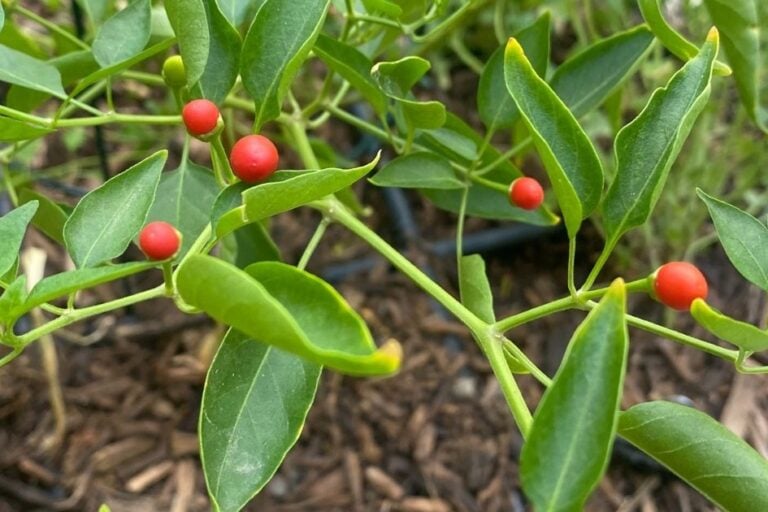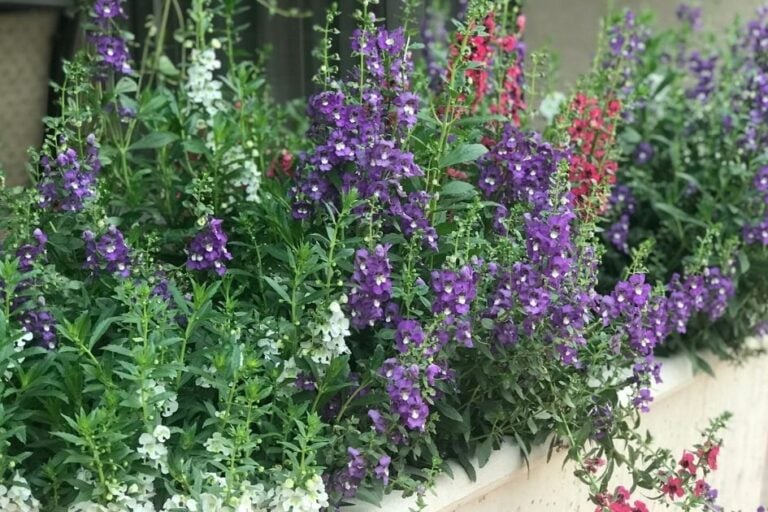How to Grow Celery (5 Growing Tips)
The first time I planted celery, I was amazed by the flavor that homegrown celery has. Its rich taste and the ease of harvesting a stalk or two whenever needed have secured celery a permanent spot in my cool-season garden. The good news is that learning to grow celery is simpler than you might think. Stay tuned until the end of the article for a bonus tip on how to grow celery in containers!

Article Index
- Choose your planting method for growing celery
- Give celery plenty of water and feed it often
- Blanch celery before harvesting (if desired)
- Harvest celery as needed throughout the season
- Preserve harvested celery in several ways
Bonus Tip: How to grow celery in containers
Frequently asked questions about growing celery
5 Tips for Growing Celery
1. Choose your planting method for growing celery
Plant celery from seed, transplants, or even the cut-off base of a grocery-store bunch. Here’s what I’ve learned about the different methods:
- Starting seeds indoors gives you control over the variety and generally yields the largest plants and most consistent results.
- If you find transplants at your local nursery, it’s a great way to get a quick start.
- A cut-off base is a simple way to grow celery and is fun for kids to try in the garden. Learn more about this simple garden hack here.
Try all three methods for growing celery and see which works best for you.

Start celery seeds indoors 10-12 weeks before your last frost date. Transplant celery seedlings (or cut-off celery bases) when the soil temperature is at least 50°F (10°C).
Celery planting dates for the low desert of Arizona:

Transplant seedlings (or cut-off celery bases) outside 8-10 inches apart at the same level as the nursery pot. For square foot gardening, plant four celery per square. Bury cut off bases 2-3 inches deep. You should see sprouts emerge within a week or two.
If planting from seed in the garden (not recommended because of the need for a long growing season), plant seeds 1/4 inch deep and thin to 8-10 inches apart when seedlings are about 6 inches tall. Follow the rest of these celery growing tips for a successful harvest.
2. Give celery plenty of water and feed it often

When growing celery, the soil must be consistently moist, not soggy. If celery dries out, it can be stringy, bitter, and bolt. Mulching the soil after planting helps keep celery from drying out. I use garden grids to water my garden with excellent results.

Celery grows best in compost-rich soil that is high in organic matter.
Fertilize celery with a fish-emulsion solution once a month throughout the growing season. To do this, add fish emulsion to a container and fill it with water, following the dilution instructions on the label.
Fish emulsion is an excellent source of organic nutrients and nitrogen that will not burn plants. It is easily absorbed and quickly taken up by the roots of the plants. You can also amend the soil around celery with compost. Feeding your celery allows it to thrive.
3. Blanch celery before harvesting (if desired)
Blanching celery (even self-blanching types) helps eliminate the bitter taste and makes it sweeter and more tender. Unblanched stalks are darker green and tougher but contain more nutrients than the lighter-blanched varieties.
To blanch celery, about two weeks before harvesting, wrap or cover celery plants and as much of the stalks as possible with heavy paper, soil or mulch, juice or coffee cans, boards, or other items to keep out the light. Leaves should be exposed.

4. Harvest celery as needed throughout the season


Information for harvesting stalks:
- For the best flavor, water celery well the day before harvesting.
- Harvest single stalks as needed from the outside of the plant when it reaches the desired height.
Harvest celery until it begins to get hot. For me, in Arizona, that means late spring.


Celery doesn’t like hot temperatures, and as it heats up, it will become bitter. As summer nears, blanch the celery (if desired) and harvest the entire plant. To harvest the whole plant, cut it at soil level with a knife.
If left in the ground, the celery may also bolt, meaning that the plant focuses on producing seeds. When it bolts, the central stalk of the celery becomes taller, flowers, and produces seeds.
5. Preserve harvested celery in several ways

Homegrown celery has so much flavor and is worth preserving if you can’t use all the garden produces.
- Celery will keep in the fridge for several weeks if wrapped in foil or submerged in water in a sealed container.
- To freeze celery: Chop, then blanch in boiling water for 2 minutes. Drain, and put blanched celery on a cookie sheet, and freeze. Once the celery is frozen, store it in freezer bags for up to a year.
- Dehydrate or freeze-dry celery. Grind it into celery powder before using; it does not hydrate well. Use freeze-dried celery in recipes like this one to make celery salt.



Learn more about how to make and use freeze-dried celery in this article.
Bonus Tip: How to grow celery in containers
Celery is a good choice for containers.
- Choose a container for growing celery with at least 3 gallons of soil. Potting soil is preferred for growing celery in containers.
- Be diligent about watering container-grown celery. Celery that does not get enough water has hollow stalks and is stringy.
- Feed celery in containers with a half-strength application of liquid organic fertilizer every two weeks during the growing season.

Frequently asked questions about growing celery:
How much sunlight does celery need?
Celery thrives with at least 6 hours of direct sunlight daily. While it prefers full sun, it can tolerate partial shade, especially in hotter climates.
How do I space celery plants?
Space celery plants 8 to 10 inches apart within rows, and keep rows 2 to 3 feet apart. This ensures adequate air circulation and room for growth.
How do I deal with pests and diseases in celery?
Regularly inspect your celery for common pests like aphids and slugs. Use organic insecticides or natural predators to control infestations. To prevent diseases, practice crop rotation, maintain proper spacing for airflow, and remove any infected plants promptly.
Can I regrow celery from kitchen scraps?
Yes, you can regrow celery from the base of a stalk. Bury cut off bases 2-3 inches deep. You should see sprouts emerge within a week or two. While it may not grow as robustly as a seed-grown plant, it’s a simple way to recycle scraps.








I love your guide it will be of great benefit to me because I’m planting celery in a shade house but my teaching is totally different to yours thank you very much.
My Dad decided to grow celery for the first time this year and I found this guide to help him out with the process. Very helpful and very informative for him…thank you!
Wonderful, thanks for letting me know.
I am glad you showed the freeze dryer for preserving! I did blanch mine first for about 3 minutes and the color kept really well. Thanks for the tips, just transplanted 6 yesterday into my garden.
I have a freeze dryer and I’ve found that if you put a tiny little bit of baking soda in the blanching water the celery stays green.
Thanks for the tip!
Thanks. You answered the question I thought would be hard to find because I’m in the AZ desert. Just in time to start some celery!
I started my Utah celery from seed indoors. They have 1 true leaf per sprout in each cell. Wondering when I need to up-pot or transplant. It’s been about a month. I keep the house around 77 on average. They are under a grow light. Do I need to bring them out to see real morning sunlight for a hour each day. When I up pot them can I put them out side to continue growing until they are big enough to transplant??
Depends on how large the container is. Usually when roots start growing out of the bottom. I don’t usually pot up celery. You can plant it anytime, usually once it has several sets of leaves. Hopefully it will start growing more soon.
Thanks so much!!! grew celery first time this explains why they were so bitter